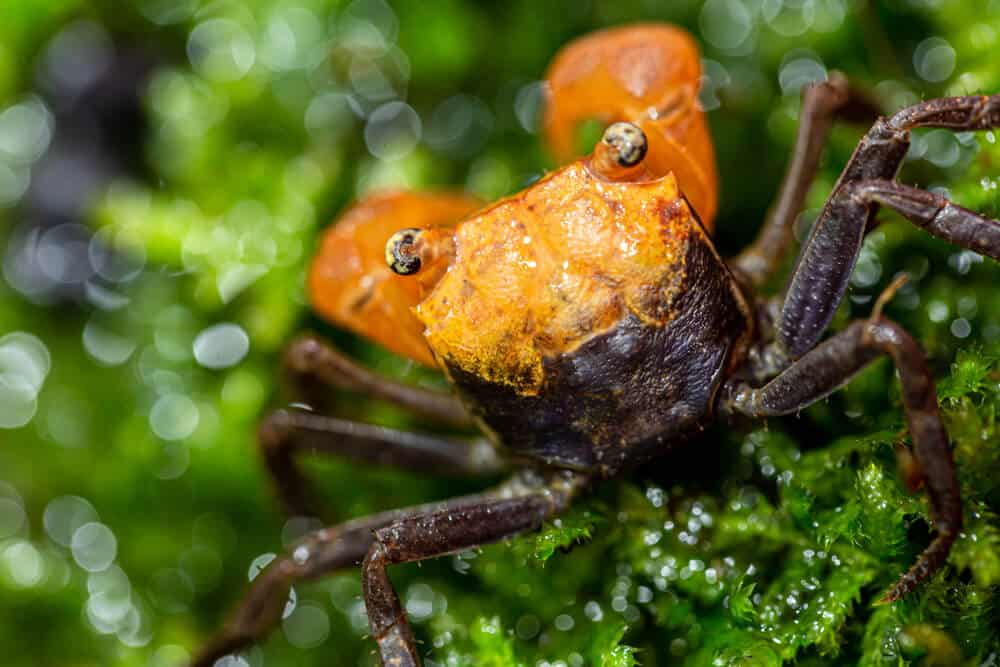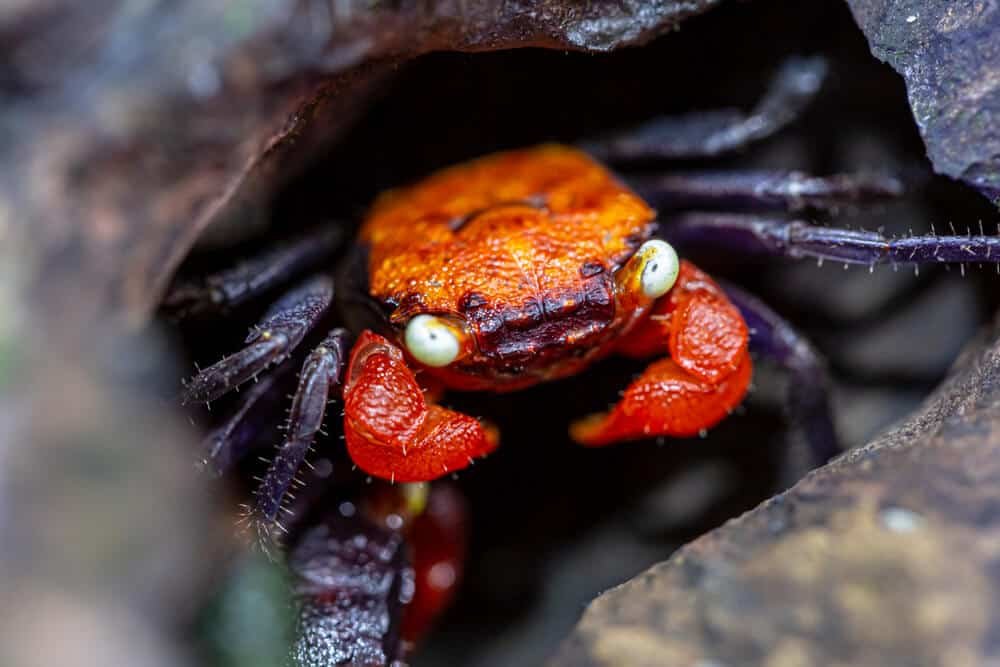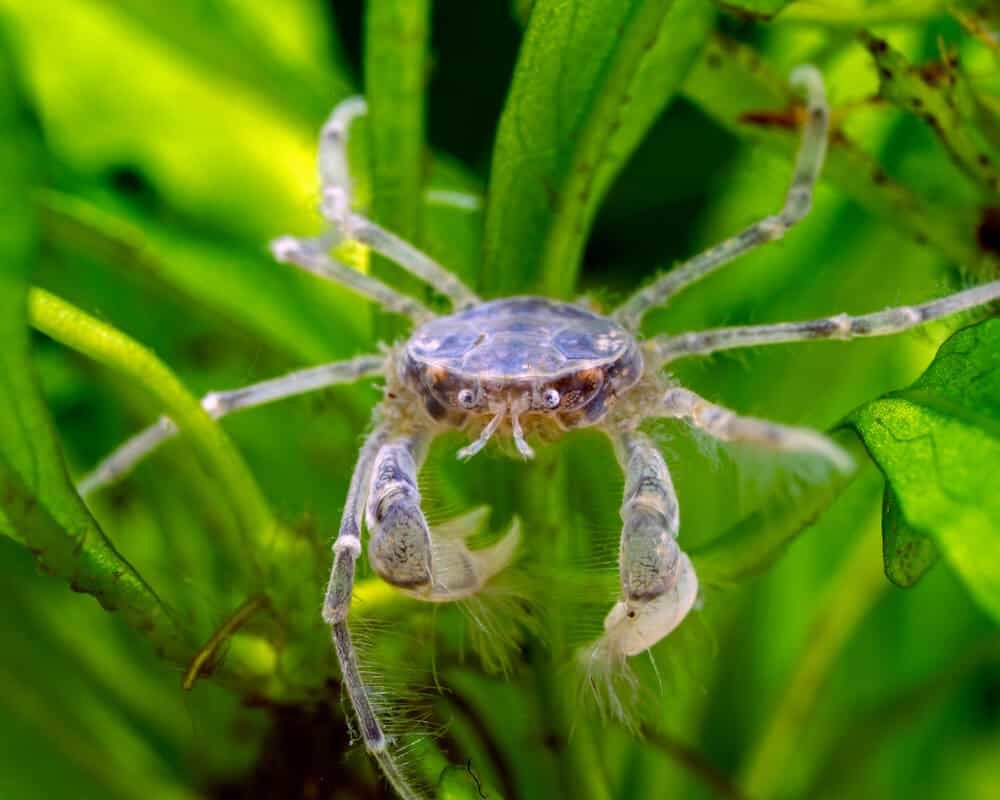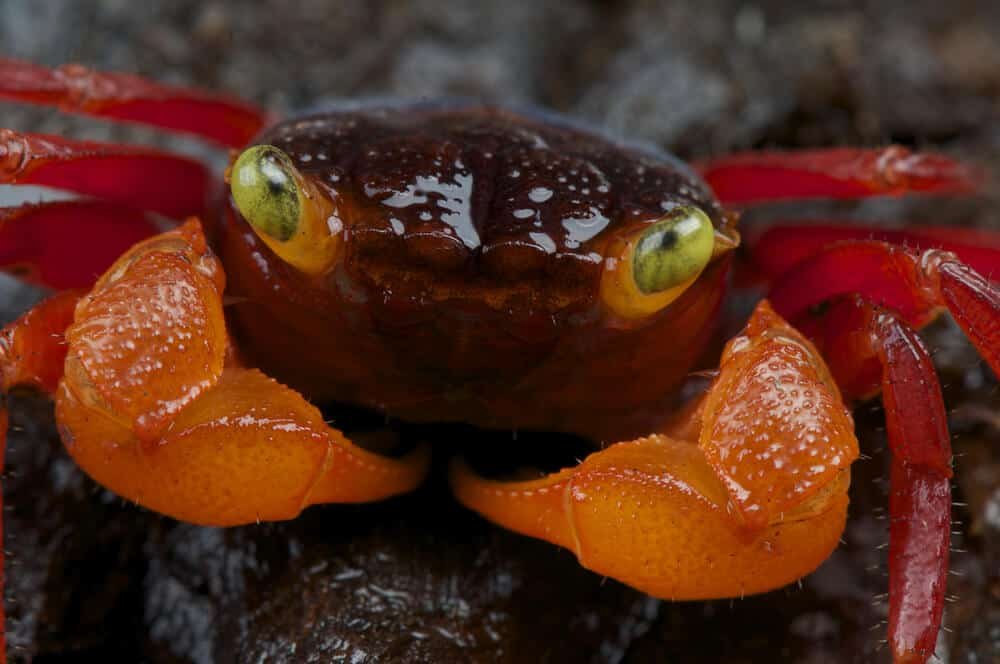How Long Do Vampire Crabs Molt?

Vampire crabs are small, colorful, and fascinating creatures that are increasingly becoming pets for many people.
They are attractive because of their purple and orange hues and behaviors that can make you watch them for a significant amount of time.
The most intriguing element of a vampire crab’s lifecycle is the molting process.
Let’s explore the world of vampire crabs and discover more amount their molting behavior.
The Molting Process of Vampire Crabs
The molting process begins with the shedding of the existing exoskeleton.
Exoskeleton is a hard layer on the body of the vampire crab that protects and supports the body.
Chitin is the basic material that makes the exoskeleton and is usually a tough polysaccharide. Before the onset of molting, vampire crabs tend to be less active and will also lose their appetite.
They do so to conserve energy and prepare for the molting process.
When ready, the crab will begin by absorbing a lot of water into its body to help in disintegrating the exoskeleton from its body.
Molting can take some hours or days to complete depending on the thickness and size of the crab.
During this process, the crab will push the exoskeleton off its body. Once the old exoskeleton is off, the crab will begin forming a new one by secreting a new layer of chitin.
This chitin will first be soft and will take days to harden. As the new exoskeleton hardens, the crab’s body cover will be soft and will be vulnerable to predators.
This requires it to find a safe ground until the new exoskeleton is hard enough. Calcium is a critical element that helps the exoskeleton of the crab to harden.
As such, it is absorbed from the environment to give strength to the exoskeleton. In captivity, you can provide crushed oyster shells to the crab so that it can absorb it smoothly.

How Often Do Vampire Crabs Molt?
Vampire crabs do not molt all the time because the molting process is influenced by various factors.
Let us first look at the factors that affect molting frequency in crabs.
• Age
Older crabs do not molt frequently while younger ones molt more frequently because molting helps in achieving growth.
• Gender
The high metabolic rate and activity in male crabs cause them to molt more often than their female counterparts.
• Diet
A well-balanced diet will result in frequent molting. For instance, a diet rich in calcium and protein will promote molting.
• Water parameters
Warm water temperatures increase metabolic rates in crabs and result in frequent molting.
On the other hand, poor water quality stresses the crabs and results in decreased molting.
While in the wild, it is difficult to control the above factors. Therefore, vampire crabs exhibit a more systematic molting duration which can start after every 4 or 6 weeks.
Nonetheless, this will still be influenced by the availability of food and temperature in the environment.
Seasonal changes affect the molting of crabs in the wild.
When it is rainy, they molt more frequently because food and water are plenty.
Signs of Molting in Vampire Crabs
When they are in their molting process, it is easy to tell from a keen observation.
Here are signs that you should look at.
• Preparation Signs
This will be the first thing that you will notice when the crab is about to molt. The crab will eat more to create energy reserves.
It will absorb a lot of minerals and water which will be needed in shedding the exoskeleton. Calcium will be essential in forming the new exoskeleton.
• Changes in Behavior
Vampire crabs will showcase certain behavior that will indicate it is molting.
For instance, they usually become less active and spend a lot of their time burrowing in the substrate or hiding.
The crab will also lose appetite because its digestive system is shut down to allow time for molting.
• Changes in Appearance
When the crab is molting, you will find out that its exoskeleton becomes soft and disintegrates from the main body.
Along the edges of the carapace, you will find a white or opaque line. The crab will become plumper because of the underneath new exoskeleton that is growing.
The eyes of the crab will appear cloudy or opaque.
Care During the Molting Process
While in captivity, vampire crabs will require special attention while molting to ensure that they complete the cycle successfully.
The first thing that you should do is to provide a secure place where the crab can hide. This could be placing a rock in the tank or any other hiding element that will make the small creature feel safe.
Also, avoid any sudden movements or noise that could disrupt the crab. You will also need to provide proper water conditions by keeping the tank clean and well-filtered with the right PH and temperature.
During the molting process, the crab might also need to climb out of the water, so ensure that the water is not too deep.
You need to monitor the progress of the crab during this stage to watch out for any signs of trouble.
Remember that your crab is vulnerable during this process. If you notice that the crab is having problems with shedding the exoskeleton, you can help by gently removing it.
Any other signs that show illness, lethargy, or discoloration should be reported to a veterinarian for immediate action.
Final Thoughts
Molting in vampire crabs is a natural process that enables crabs to grow and develop.
The frequency of molting may vary with various factors such as size, age, gender, and environmental conditions. However, in most cases, it occurs after every 4-6 weeks.
Aquarium hobbyists should understand the signs of molting and provide optimum conditions that will enable the crab to molt smoothly.
If you are a new aquarist, you do not have to worry about how to handle the process.
By following the above guidelines, you can be sure that your vampire crab will molt successfully and safely.
Nonetheless, remember to watch out for any danger signs that will inhibit successful molting or put the crab at risk.


